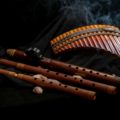The oboe is one of the four woodwind instruments commonly found in orchestras. It is also frequently used in chamber music, concert bands, and as a solo instrument. Learning to play the oboe provides various playing opportunities for individuals willing to put in the necessary effort to master the instrument.
The oboe has a reputation for being one of the more challenging instruments to learn, and it is not as well-known as other woodwind instruments such as the flute, clarinet, and saxophone. Consequently, there are fewer oboists than flutists, clarinetists, or saxophonists. However, this can be an advantage because oboists are in high demand and often have numerous playing opportunities available to them. This makes playing the oboe an especially rewarding skill.
Despite its reputation as a difficult instrument, learning to play the oboe is not any more challenging than learning any other instrument. Like every musical instrument, it has its particular challenges that can be overcome through good technique. Proper playing techniques can be learned, understood, and applied to overcome any challenges with the oboe.
Within the woodwind family, the oboe is situated between the flute and the clarinet and can be found in that order on an orchestral score. The flute can play higher notes than the oboe, and the clarinet can play lower notes, but the three instruments share a significant range of notes. The bassoon, the fourth member of the orchestral woodwind section, is the lowest instrument of the family.
Once an individual has reached a high level of proficiency in playing the oboe, they may find themselves playing the cor anglais, which is a tenor oboe. The cor anglais has an angled crook and an egg-shaped bell, but it is fingered identically to the oboe with key extensions to make finger spreading the same on both instruments.
The fundamental technique for any wind instrument is to use the diaphragm for breathing correctly. This is especially true when playing the oboe. Breathing technique must be developed from the earliest stages of learning as all other sound production techniques rely on it. Failure to breathe correctly will lead to a tight embouchure (lip formation), making high and low notes difficult to produce. Playing the oboe will become hard work, and the sound produced will be at a single dynamic level (volume). Therefore, the first lesson in playing the oboe is to learn to breathe properly, and everything else will fall into place.
Manuel Marino is a seasoned Senior Producer, Music Composer, and Artist with over a decade of experience. He specializes in branded entertainment across various mediums, including video games, films, and advertising campaigns. With 20+ years as a game music composer, Manuel has worked on numerous platforms, creating diverse orchestral soundtracks. HIRE ME


 Manuel is a passionate, driven, and techsavvy AV technician,
Manuel is a passionate, driven, and techsavvy AV technician, 


